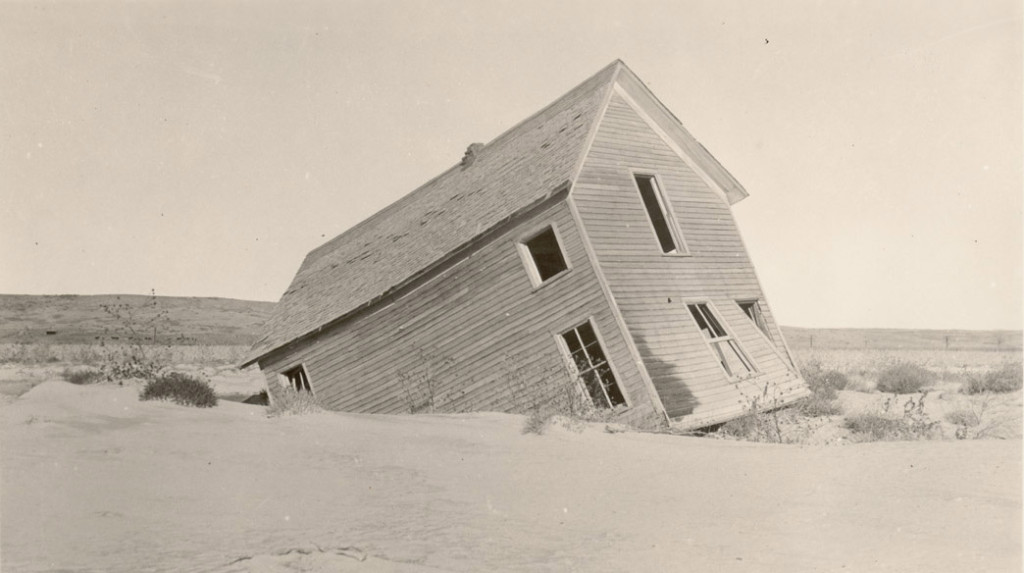 The Republican River Flood of May 31, 1935, washed this house about a quarter-mile downstream
The Republican River Flood of May 31, 1935, washed this house about a quarter-mile downstream
After years of drought, the arrival of rain in 1935 seemed like a blessing to the residents of the Republican River Valley. Years of poor farming methods followed by severe drought resulted in a period known as the Dust Bowl. It stretched from Nebraska to Texas. While the conditions in the Republican Valley were not as severe as in some areas to the south, farmers struggled. Rained signaled the valley’s revitalization. However, it also marked a new era for the region, one in which the federal government and its “New Deal” programs played a significant role in the aftermath of natural disaster. The full story is presented in “‘Gentle River Goes Mad’: The Republican River Flood of 1935 and its New Deal Legacy,” by Stacey Stubbs, in the Spring 2016 edition of Nebraska History.
The change to the usually gentle Republican River came with little warning. The Dust Bowl ironically created conditions ripe for flood because the dry ground proved incapable of absorbing large amounts of precipitation. The runoff from the rain in Colorado rolled into the Republican River. The result was the “greatest flood on record.” Normally, the river was 300 to 400 feet wide. During the flood, it spread over a mile wide and up to four miles wide in several areas in Kansas and Nebraska. The Omaha World-Herald described the resulting trail of disaster under the headline “Gentle River Goes Mad.”
 Flood damage on north end of Highway 281 bridge, Republican River Valley, 1935
Flood damage on north end of Highway 281 bridge, Republican River Valley, 1935
The Republican River drainage basin covers 22,400 square miles and stretches across Colorado, Kansas and Nebraska. An estimated 113 people perished in the flood, but most families recovered the bodies of their lost loved ones. The flood damaged 74,500 acres of farmland, 341 miles of highway, and 307 bridges, along with many homes and buildings of those living near the river. The loss was approximately $26 million with property damage included.
 Senator George W. Norris next to the Norris Dam
Senator George W. Norris next to the Norris Dam
Aside from the 1917 Flood Control Act, the federal government in the early twentieth century was reluctant to involve itself in disaster intervention. The New Deal showed a change in mindset. While a national flood control program took time to developed, the Roosevelt administration began taking important steps at the beginning of his presidency. The “First Hundred Days” saw the creation of the Tennessee Valley Authority to provide electricity and flood control to that region.
This improvement was a new concept for the country. Tennessee Valley Authority’s early days proved chaotic in terms of legislation. Nebraska’s Senator George W. Norris became one of the most notable figures in the flood control debates. Eventually, the president of the Tennessee Valley Authority began a construction project known as Norris and Wheeler Dams. These dams are among the New Deal’s most important legacies.
Although the focus of the Tennessee Valley Authority was the Tennessee River, the program changed public expectations for flood control. This in turn affected the steps taken after the Republican River Flood. Though the discussion of flood control had begun in 1935, nearly 14 years passed before the first dam was completed. During that time government officials and local residents strove to recover from the disaster and prevent its recurrence. They worked under new assumptions about the role of the federal government, assumptions that came out of the New Deal and its work in the Republican Valley.
–Brittany Hamor, Editorial Assistant



